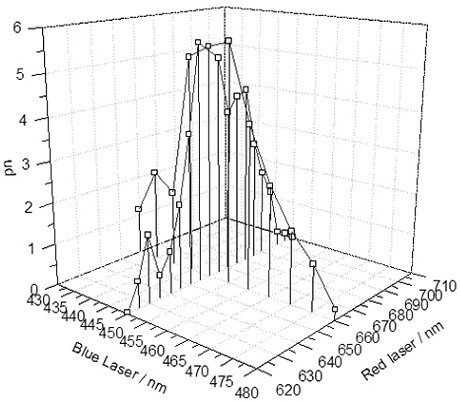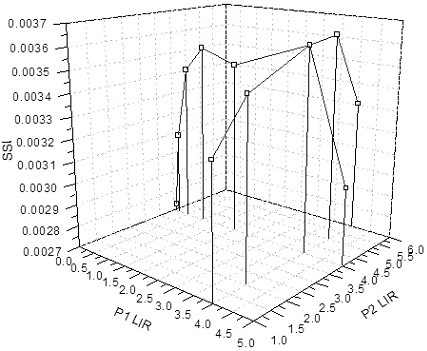Laser seedling raising method and rice cultivation method based on the same
A laser and rice technology, which is applied in the field of laser seedling cultivation and rice cultivation, can solve the problems of high energy consumption, poor effect, and low efficiency, and achieve the effects of reducing energy consumption ratio, improving light utilization rate, and significant energy saving effect
- Summary
- Abstract
- Description
- Claims
- Application Information
AI Technical Summary
Problems solved by technology
Method used
Image
Examples
Embodiment 1
[0054] A method for cultivating rice, specifically comprising the following steps:
[0055] 1) Arrange the laser light source in the greenhouse for cultivating seedlings, at a height of 4 meters from the surface of the rice seedling substrate. The surface of the seedlings is raised in a plane. The irradiation area of each lamp is about 60 square meters. Adjust the projection angle of the light source to make the light field evenly distributed;
[0056] 2) After the rice seeds (Daohuaxiang No. 1) emerged, use blue light with a wavelength of 450 nm and a red laser light with a wavelength of 660 nm, adjust the red-blue ratio to 4:1, and the initial laser light intensity of 0.1 μmol m -2 ·s -1 , when the ambient light intensity is lower than 200 μmol m -2 ·s -1 When the laser light source is turned on, the supplementary light is 4 hours per day, and the supplementary light is not more than 14 hours per day on cloudy days; after that, the light intensity increases by 0.1 μmol m...
Embodiment 2
[0070] A method for cultivating rice, specifically comprising the following steps:
[0071] 1) Arrange the laser light source in the three-dimensional planting rack of the plant factory. Each planting rack is divided into three layers, the height between layers is 60cm, and the light source is 50cm away from the surface of the rice seedling substrate. Make the light field distribution uniform;
[0072] 2) After the rice seeds (Jihong No. 6) emerged, the blue light source with the central wavelength of 455 nm and the red laser light source with the central wavelength of 665 nm were selected, the red-blue ratio was adjusted to 0.5:1, and the laser light intensity was 0.8 μmol m -2 ·s -1 , when the ambient light intensity is lower than 200 μmol m -2 ·s -1 When the laser light source is turned on, the supplementary light is 4 hours a day, and the supplementary light is not more than 14 hours a day on cloudy days;
[0073] 3) From the three-leaf stage to before transplanting, t...
Embodiment 3
[0084] A method for cultivating rice, specifically comprising the following steps:
[0085] The laser light source is arranged above the rice seedling tray in the greenhouse where the seedlings are cultivated, at a height of 60cm from the surface of the seedling substrate. The surface of the seedlings is raised in a plane. The irradiation area of each lamp is about 1 square meter, and the projection angle of the light source is adjusted to make the light field evenly distributed;
[0086] 2) After the rice seeds (Yongyou 12) emerged, the blue light with a wavelength of 450 nm and a red laser with a wavelength of 665 nm were selected, the red-blue ratio was adjusted to 3:1, and the laser light intensity was 0.7 μmol m -2 ·s -1 , when the ambient light intensity is lower than 200 μmol m -2 ·s -1 When the laser light source is turned on, the supplementary light is 4 hours a day, and the supplementary light is not more than 14 hours a day on cloudy days;
[0087] 3) From the ...
PUM
 Login to View More
Login to View More Abstract
Description
Claims
Application Information
 Login to View More
Login to View More - Generate Ideas
- Intellectual Property
- Life Sciences
- Materials
- Tech Scout
- Unparalleled Data Quality
- Higher Quality Content
- 60% Fewer Hallucinations
Browse by: Latest US Patents, China's latest patents, Technical Efficacy Thesaurus, Application Domain, Technology Topic, Popular Technical Reports.
© 2025 PatSnap. All rights reserved.Legal|Privacy policy|Modern Slavery Act Transparency Statement|Sitemap|About US| Contact US: help@patsnap.com



